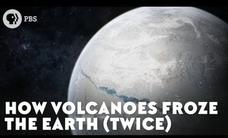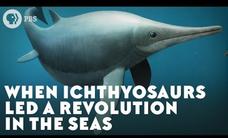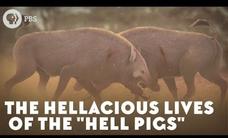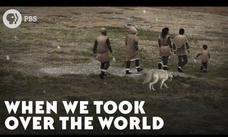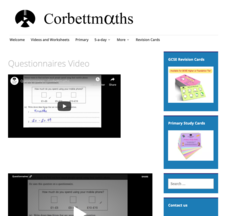TED-Ed
How Turtle Shells Evolved... Twice
How do turtle shells form? Scholars explore the evolution of turtle shells and learn about how they form from many different bones before relating the process to cell differentiation in an organism. Pupils also look at different turtle...
NASA
STEMonstrations: Solar Energy
Astronauts would be lost without solar energy. A video lesson straight from the International Space Station describes how solar energy keeps the station running. Learners then complete an activity that explores the availability of solar...
NASA
Year of Education on Station: Fun Facts
School in space would be one heck of a commute. The video series STEM on Station offers the next best thing—a glimpse into that world. A group of astronauts and teachers spent a year on the International Space Station to create content...
NASA
STEMonstrations: Water Filtration
What do astronauts do when they run out of water? They recycle their used water of course! An astronaut on the space station explains how the water they use gets filtered to create fresh drinking water in an installment of the STEM on...
NASA
STEMonstrations: Kinetic and Potential Energy
A roller coaster is the perfect model of the conversion between potential and kinetic energy. An installment from the STEMonstrations playlist introduces the concept of kinetic and potential energy in a quick video before challenging...
NASA
STEMonstrations: Orbits
Learn about the orbit of the International Space Station directly from an astronaut on the International Space Station! Young scholars hear about the shape and path of orbits from a NASA astronaut in the video lesson from a larger...
NASA
STEMonstrations: Surface Tension
Ever wonder how water bugs walk on water? A lesson in the STEMonstration provides a brief video presentation describing the concept of surface tension from the molecular level. Pupils then complete a hands-on activity measuring the...
PBS
How Volcanoes Froze the Earth (Twice)
Volcanoes contributing to freezing seems counterintuitive, but it's true. The freezing and thawing of the earth has happened multiple times in the planet's history. Scholars learn how the carbon cycle contributed to Earth's temperature...
PBS
When We Met Other Human Species
It seems the human species may have learned from its mistakes—when it comes to evolution, anyway. Examine the characteristics of ancient hominins in an installment of the PBS Eon series. The video instructor discusses fossil records to...
PBS
When Ichthyosaurs Led a Revolution in the Seas
During The Great Dying, 90 percent of life in the ocean died. A video lesson from the PBS Eon series describes how the oceans recovered. Viewers learn how some species adapted and thrived while others became extinct.
PBS
When the Synapsids Struck Back
As environments change so must their inhabitants, or extinction will prevail. An in-depth look at the evolution of the synapsids shows how one group overcame environmental changes and survived. The video lesson from the PBS Eon series...
Mathispower4u
Intro to Polynomials in Two Variables (Example)
How do you organize polynomials? The presenter in a short video shows how to find the degree and coefficient of the terms of a polynomial that contains more than one variable. Scholars use that information to find the leading coefficient...
PBS
The Croc That Ran on Hooves
A crocodile with hooves and razor-sharp teeth was really a thing—and there is proof. A video lesson from the PBS Eons series presents the fossil evidence and explores the reasons for the adaptations of the unique reptile. Scholars see a...
Smithsonian Institution
Natural Selection: Common Misconceptions
Overcoming pupil misconceptions is much harder than teaching a new topic. Anticipate misconceptions to avoid having to reteach and relearn by showing a lesson resource from the Good Thinking PD series that highlights common mistakes. A...
PBS
How Evolution Works (And How We Figured It Out)
The concept of evolution changed the way scientists view the world. Part of the PBS Ions series, a thorough video lesson explains the process of evolution by exploring the work of scientists like Charles Darwin and Gregor Mendel. The...
PBS
The Hellacious Lives of the "Hell Pigs"
Some animals have more in common than meets the eye. An episode of the PBS Eon series analyzes the fossil records of a mammal nicknamed the hell pig. The lesson describes how evolutionary methods determine the genetic evolution of the...
PBS
The History of Climate Cycles (And the Woolly Rhino) Explained
Subtle changes in climate can have a significant effect on habitats. An installment of the PBS Eons series describes the history of climate changes. The instructor describes specific causes of the changes throughout history and how the...
PBS
The Ghostly Origins of the Big Cats
A lack of fossil records forces scientists to piece together the evolution of the big cats. The PBS Eons video lesson describes the processes scientists use to infer evolutionary details and predict possible species. Scholars get an...
PBS
When We Took over the World
Exactly how did humans become the top of the food chain? Follow archeologists through an analysis of the fossil records during a video presentation from the PBS Eons series. The ancient artifacts trace human evolution from Africa to the...
PBS
The Mystery behind the Biggest Bears of All Time
Bears come in many different shapes and sizes. Follow the evolution of the prehistoric bear through time in an episode from the PBS Eon series. The narrator discusses the evolution of the bear by examining adaptations and their...
Bite Sci-zed
Theory vs. Scientific Theory
Why do people have scientific theories but not scientific facts? A quick video presentation defines scientific theory and the components necessary for developing a theory. The presenter emphasizes the difference between scientific proof...
Corbett Maths
Questionnaires
Build a good set of questions. Scholars learn how to critique a set of questionnaires and determine if they are good. The instructional activity provides them an opportunity to create a suitable question to replace a flawed one.
Bite Sci-zed
DNA Extraction!
Extracting DNA is probably easier than pupils think! A quick video demonstrates one method of extracting an individual's DNA. The presentation shows each step of the process as well as the results.
Bite Sci-zed
DNA and RNA, A Nucleic Acid Primer!
Every single cell in the human body is packed with genetic material! A video presentation provides a thorough overview of the components of this genetic material. An engaging instructor defines DNA and RNA and discusses its structure and...







